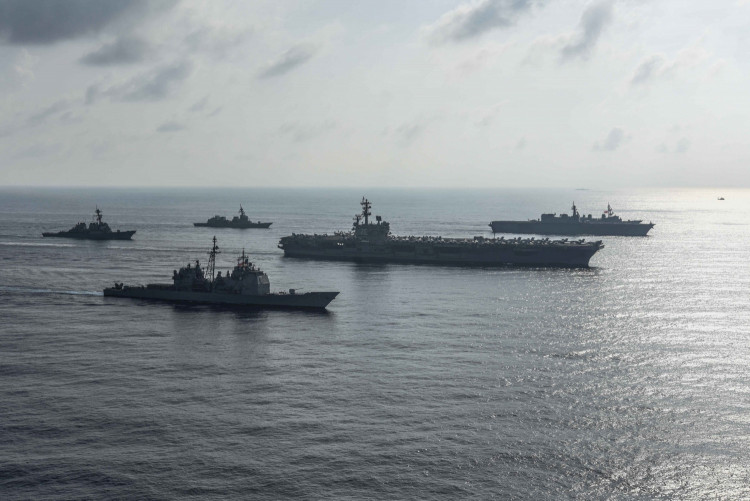Republican lawmakers in the U.S. House of Representatives vow to fight for the military spending vital to keeping the U.S. Navy on track to deploy 546 manned and unmanned warships by 2045 as rumors swirl of lower military budgets under the Biden administration in the coming years.
The need to finance the massive U.S. budget deficit is putting pressure on Congress to scale back expenditures. The U.S. incurred a deficit of $3.1 trillion in fiscal year 2020 ending Sept. 30.
This number was more than triple the deficit for fiscal year 2019 and amounted to 15.2% of GDP, the largest deficit as a share of the economy since 1945. The economic devastation caused by COVID-19 and the huge stimulus packages that kept the economy from going under were major reasons for the record deficit last year.
Senior Navy officers are publicly voicing concerns to members of Congress about the likelihood of flat or declining defense budgets in the years ahead in light of U.S. economic woes.
Acting Navy Secretary Thomas Harker said he expects to have a better understanding of the Biden administration's priorities for shipbuilding once officials like deputy defense secretary nominee Kathleen Hicks and Neera Tanden, director of the White House Office of Management and Budget, are confirmed by the Senate within the month.
Rep. Mike Rogers of Alabama, the top Republican and the Ranking Member in the House Armed Services Committee (HASC), and Rep. Rob Wittman of Virginia, Ranking Member of the Seapower and Projection Forces Subcommittee, affirm they'll push to maintain defense spending at current levels. Doing so will ensure money is available for the modernization and increased readiness for the Navy and the other armed services.
"And that means making sure that we stand by the funding levels that we've had in the past," said Wittman. "In fact, I would argue you have to be able to factor in an element of inflation to make sure we have the dollars necessary."
"You know that those dollars are needed, as we've seen in the National Defense Strategy, the 30-year shipbuilding plan, Battle Force 2045, however you want to parse it out. Those things are incredibly important," he added.
Wittman and the Biden administration are on the same page in their assertion the emphasis on China as the main challenge for the Navy will drive U.S. strategy in Battle Force 2045 and make a larger fleet essential.
"You might have a debate about what classes of ships you want to prioritize or how you integrate unmanned platforms. But I think overall, the idea is you have to be able to counter the Chinese and, in turn, our other adversaries, including the Russians that, while they're not modernizing at the pace that the Chinese are, they have some pretty capable assets that do place the United States at risk. So you have to be able to do those things," said Wittman.
Last December, the Navy released details of its immense warship building program that will ensure its capability to defeat the navies of China and Russia over the next half-century.
The Navy's 30-year shipbuilding plan proposes investing more than $167 billion for 82 battle force ships and 21 unmanned surface vessels (USVs), among other ships, to expand its total surface and subsurface fleets.
The enormous shipbuilding program will see the size of the fleet hit the long-sought-after 355-ship level by 2033 compared to a low of 271 ships in 2015 and some 300 today.
By 2045, the Navy will have 403 battle force ships and 143 unmanned vessels. This future fleet should include 11 aircraft carriers, nine amphibious landing ships, 57 amphibious warfare ships, 74 large surface combat ships, 66 small combatant ships, 72 attack submarines, and 12 ballistic missile submarines.
An enormous increase in the numbers of robotic ships is key to reaching a 500-ship Navy and reducing the huge maintenance costs of manned ships. The plan projects spending $4.3 billion on 21 robotic ships from fiscal 2022 to 2026.






